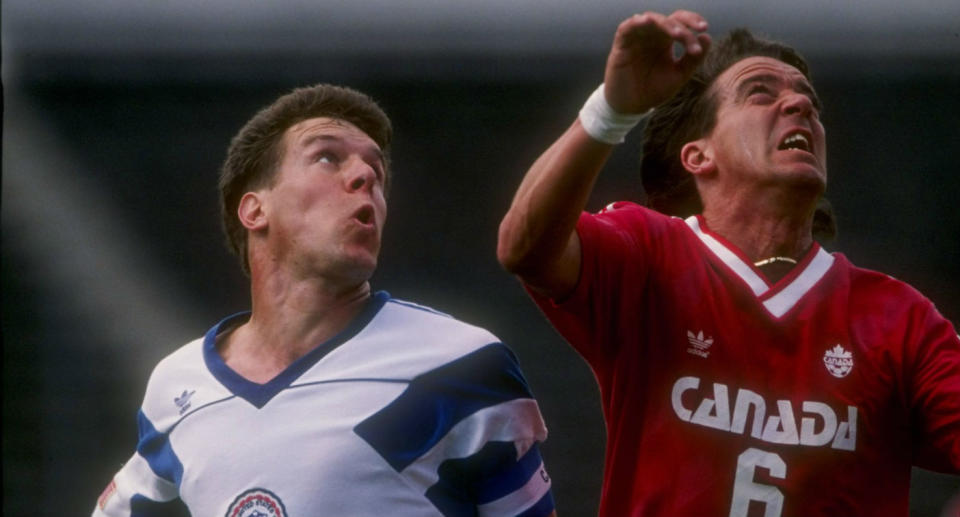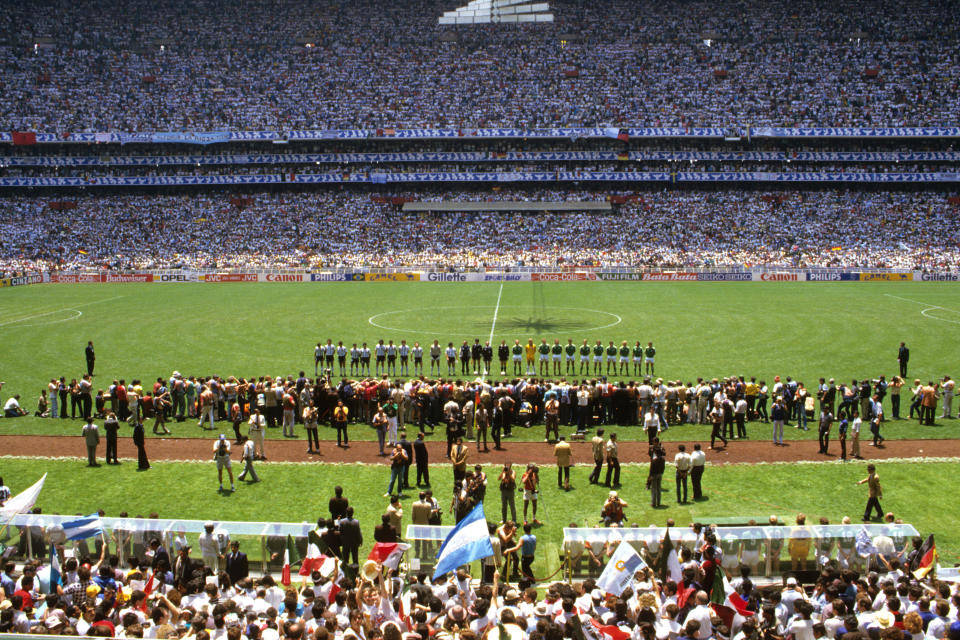Here's where soccer stood in America the last time the USMNT missed the World Cup
Hey there, American soccer fan. Step into this time machine. It’s the first week of June in 1986. “Cobra” starring Sylvester Stallone is the No. 1 movie in the United States, having just leapfrogged Tom Cruise’s “Top Gun.”
A Whitney Houston song tops the Billboard Hot 100, ahead of singles by Madonna and Patti LaBelle. The nation’s sporting interests are consumed by the NBA Finals, featuring Larry Bird and the Boston Celtics against the Houston Rockets. Some Americans might be vaguely aware that the 1986 World Cup has just kicked off south of the border in Mexico, but most of them probably haven’t even heard of global soccer’s quadrennial championship. To the vast majority of Americans, the world’s most popular sport pretty much doesn’t exist at all.
Flash forward to present day. It’s been 28 years since a World Cup has taken place without the U.S. men’s national team involved. It’s hard to describe to young people today what the sport looked like in the country the last time the USMNT missed out. Not a single member of the American team that beat Bolivia in a friendly earlier this week had been born when it happened.
“I would bet that most people didn’t know we had a national team in 1986,” says historian and 2017 National Soccer Hall of Fame inductee Jim Trecker. “We barely had a national team in the early 1980s.” He’s not exaggerating. Between late 1980 and mid-1984, the U.S. men played just two matches.
The game had made inroads throughout the previous decade. But the North American Soccer League, which drew huge crowds in some American and Canadian cities in the 1970s, had been shuttered for two years by the time the 1986 World Cup rolled around. The U.S. Soccer Federation was in shambles. The men’s squad had failed to qualify for eight consecutive World Cup tournaments. And while soccer was being played in high schools and colleges and in immigrant communities from coast to coast, there was close zero coverage of the professional or international game in the mainstream, pre-internet mass media.
“There was no respect for the game at all,” says former U.S. player and current Sporting Kansas City coach Peter Vermes.

Only Spanish-language network SIN, now known as Univision, showed all 52 World Cup games in 1986. NBC aired just seven matches and drew miniscule ratings for most of them. On cable it was even worse: just 221,000 households tuned in to the group stage contests ESPN broadcast. Compare those numbers to the 24.5 million Americans who watched the 2015 Women’s World Cup final, and it’s easy to see how dramatically American consumers’ appetites have changed when it comes to the beautiful game.
“Soccer is dreadfully dull to watch on TV,” read a Sports Illustrated piece published at the tail end of Mexico 1986. “Only four soccer scores are known to exist: 2-0, 1-1, 1-0 and 0-0. It’s b-o-r-i-n-g, and the ratings prove it.”
The presentation didn’t help. With NBC inserting 60-second commercials into live action, it wasn’t unusual for viewers to miss game-changing plays.
“When the ball would go out of bounds deep in the defensive end for a defensive throw-in, you’d call for a commercial,” says Trecker, who worked for NBC at the time. “It was a roll of the dice.”
Those who watched in English were more curiosity seekers than anything else. Media members were no different. Trecker remembers those frantically trying to learn about the sport being comically uninformed.
“People would call me up asking where ‘the game’ would be played,” he says. “I had to explain to them that the World Cup was actually 52 games over 30 days.”
The ignorance didn’t end there, either.
“People didn’t understand how Diego Maradona could play for Napoli and Argentina” Trecker added. “They couldn’t get their heads around it. I’d say, ‘Think of it like baseball’s All-Star game. Somebody plays for the Yankees, but for this one day they’re going to represent the American League. This tournament is a month of that.’ This was the depth of knowledge at the time. It might as well have been the Cricket World Cup coming to the United States.”

With no outdoor first division league to play in, promising U.S. players found themselves a particularly tough spot. The ones who could found work in the old Major Indoor Soccer League, but it far from ideal.
“There were a lot of good American players, but those poor guys were going from indoor soccer to World Cup qualifying,” says BeIn Sports play-by-ply icon Ray Hudson, who also moved to the MISL after the NASL folded. “They’re diametrically different sports. I wouldn’t have wanted to be them. They were lost children, a lost generation. It was sad.”
Vermes was standout player at Rutgers University at the time. A year later, he was helping the U.S. U-23 squad qualify the 1988 Summer Olympics in Seoul. According to Vermes, that qualifying campaign was the unlikely start of the sport’s awakening in America — not that anyone was paying much attention to Olympic soccer.
“We’d just been named as host nation for the 1994 World Cup so making the Olympics gave us credibility, and the experience helped us qualify for the World Cup in 1990,” says Vermes, who would go on to captain the first U.S. World Cup squad in 40 years.
The record-smashing success of USA 1994 four years later led to an explosion of interest in the sport from fans and sponsors. MLS arrived as a 10-team circuit in 1996 and has nearly tripled in size since. Soccer in America is big business now. It’s gone from niche to mainstream in less than four decades, and it doesn’t appear ever headed back to the bad old days.
All of that makes it hard to believe that the U.S. won’t play in Russia when the 2018 event kicks off later this month. The good news, if you can call it that, is the failure isn’t the death knell it could have been earlier.
Hudson was the coach of the Miami Fusion when MLS shut it and the Tampa Bay Mutiny down shortly after the U.S. punched its ticket to Korea/Japan 2002. He shudders to think about what soccer might look like in the U.S. today had that national side slipped up instead. He has no such worries now.
“This isn’t in any way a fatal blow for American soccer,” Hudson says of the qualifying disaster. “The game has never been healthier, it’s never been more followed, it’s never had more exposure.
“There’s been lessons learned for sure,” he continues. “The U.S. is not entitled to play at the World Cup. Everybody knows it now, so you better get better. But the fact is there is too much already in place for the sport not to continue on an upward trajectory. Today, the advancement of this game in this country is unstoppable.”
Doug McIntyre covers soccer for Yahoo Sports. Follow him on Twitter @ByDougMcIntyre.
More World Cup from Yahoo Sports:
• 2018 World Cup preview hub
• FC Yahoo Mixer: Settling the great VAR debate
• Group previews: A | B | C
• Bushnell: 32 takeaways from club season that pertain to Russia
• Schaerlaeckens: This is Putin’s World Cup, with FIFA’s permission



